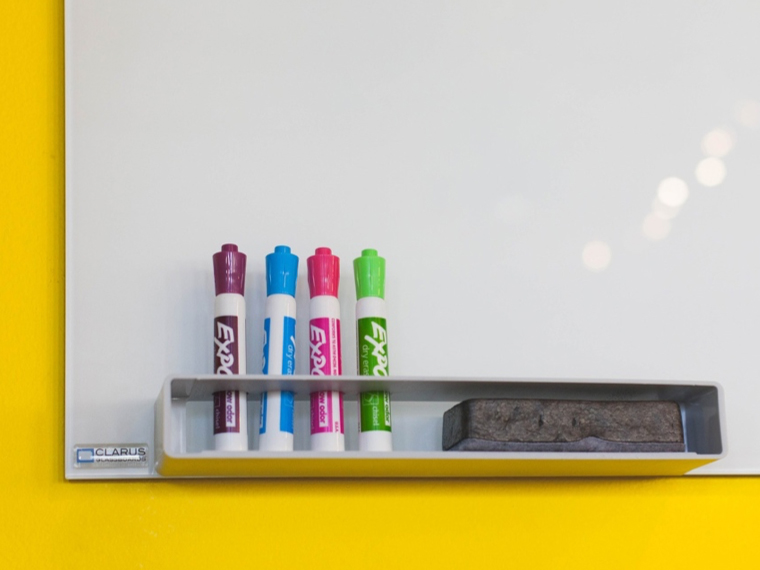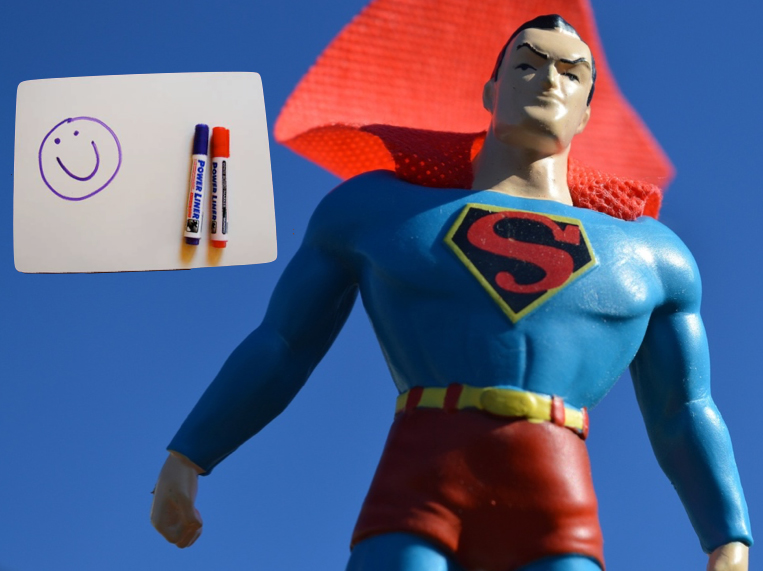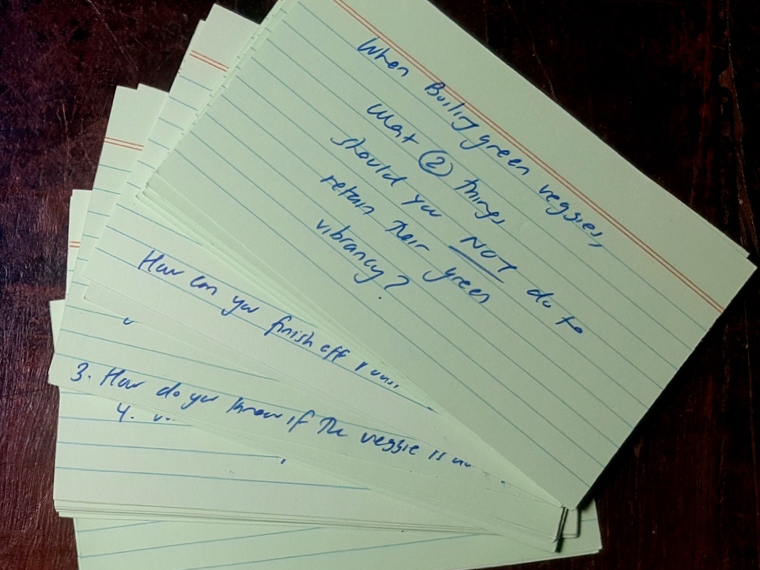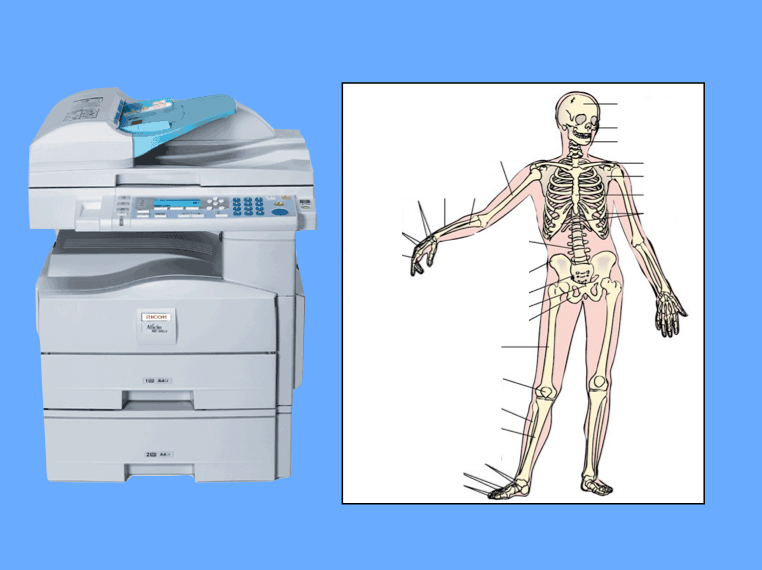Take a moment to think of your favourite restaurant . . .
Do you tend to order the same dish every time you go there?
I have a tendency to do this.
It’s safe. It’s easy. It’s consistently good.
We can also be like this with the way we study. For instance, I used to be mind map obsessed. It was mind maps for breakfast, lunch and dinner.
Mind mapping worked a treat. It helped me go from getting just 5% on my first test at law school to blitzing my exams.
But 10 years ago, thanks to a conversation with a student, I starting testing out new and different ways to study.
This student mentioned she had created some mind maps. And yes, they had helped her a lot. But she had discovered an even better strategy.
“What on earth could be better than mind mapping?” I thought.
Her strategy was so bizarre and left field, I never forgot it. Here’s what she said:
“Every day when I come home from school, I talk to my bedroom wall. I teach my bedroom wall everything I’ve learnt at school that day.”
At the time, it sounded crazy. But this young woman was onto something. In fact, she was using one the most powerful learning strategies – active recall.
What is active recall?
Active recall (also referred to as retrieval practice) is where you force yourself to bring information to mind without looking at your books and notes.
In How to use retrieval practice to improve learning Cognitive Scientist Dr Pooja Agarwal says:
“Often, we think we’ve learned some piece of information, but we come to realize we struggle when we try to recall the answer. It’s precisely this “struggle” or challenge that improves our memory and learning – by trying to recall information, we exercise or strengthen our memory, and we can also identify gaps in our learning.”
Bicep curls for the brain
Doing active recall is like lifting heavy weights.
Every time I do bicep curls with 10kg dumbbells, it feels uncomfortable. But I’m okay with this because I know I’m strengthening my muscles and ultimately, improving my health.
Similarly, when you do active recall, it strains your brain. But every time you do it, you’re strengthening the information in your brain. You’re growing a stronger, smarter brain.
This is how I learn all my talks so I can present freely without notes and/or palm cards. I still mind map out my talks but I also use active recall to help encode the information into my long-term memory.
When I first started using active recall, I found it really challenging. Often, nothing would come to mind. My mind would go blank (“How do I start this talk again? Umm . . . I have no idea”). But as Dr Megan Sumeracki and Dr Yana Weinstein says in Understanding how we learn:
“When you begin practicing retrieval [active recall], you probably will not be able to remember everything, and that’s okay. It does not mean that you aren’t learning anything from retrieval practice, or that retrieval practice is not “working for you”. Retrieval practice is difficult, and this difficulty is good. Keep at it, and you can work your way up to being able to recall more.”
Basically, the more you practice active recall, the better you’ll get at it!
11 ways to do active recall
Anything that involves retrieving information from your brain is active recall. There are so many different ways you can do this. Below I’ve listed a few of my favourite ways.
1. Flashcards
This technique is so simple yet so effective. You have a question on one side of the card and the answer on the back. Then you test yourself.
The beauty of flashcards is they are small and portable. This means you can take them with you wherever you go, even on a walk.
I like using palm cards that I can actually hold and shuffle but you could use apps like Quizlet or Anki. Do what works for you.
2. Do practice tests and exam papers
Get your hands on as many practice tests as you can (ask your teacher and/or access study guides for these).
Treat each practice test as a proper test. Do your best to answer as many questions as you can. Then check to see how you went.
A lot of students make the mistake of checking the answers as soon as they come across a difficult question (and they don’t attempt the question). The key is to have a shot at the question before you look at the answer.
3. Create your own practice tests
Don’t have access to practice tests/exams? No problem. Create your own by scribbling out some questions on a sheet of paper. It doesn’t have to be neat or pretty. It’s the process of bringing information to mind that matters most.
4. Running around a table technique
Don’t like sitting for long periods? Then try this highly original study method that was developed by three year 11 girls. Here’s what they do:
They start running around a big boardroom table. They yell out questions to one another (e.g. “What is confirmation bias?”) and the others yell out the answers. If someone says the wrong answer, the others correct them.
I love this strategy because it combines movement with active recall. Plus, you’re learning with your friends which makes studying more enjoyable.
5. Lucky dip with friends
Write out a number of different concepts you need to learn on scraps of paper. Throw those bits of paper into a hat or bowl. Pick a concept and then write/draw out as much as you can remember. You’ve only got 2 minutes – go!
When the timer goes off, check to see how you went. It’s okay to get the concept wrong, as long as you find out what the right answer is.
6. The whiteout and photocopier technique
If you need to memorise parts of a system (e.g. skeletal system or cell structure), don’t just stare at the page and hope the terms will magically transfer into your brain.
Make a photocopy of the diagram you need to learn. Then on the photocopy, whiteout all the terms you need to memorise. Then make multiple copies of that test copy (at least three copies). Take a test copy and try to fill in as many terms as you can.
Finally, when your brain can’t do anymore, check to see how you went. What did you get right? What did you get wrong? Where are the gaps in your knowledge?
7. Jack’s swimming method
A year 11 student called Jack developed this method with the help of his swim coach. He does a lap of the pool and then his coach tests him with his flashcards. You can read more about Jack’s highly original study method here.
8. The Feynman method
Richard Feynman was a famous physicist who hated rote memorisation. He believed the best way to learn something was to teach that thing to someone else. So go teach a friend, your pet or the wall.
9. Work with a whiteboard

Get your hands on a whiteboard and start writing and teaching out concepts. Talk out loud (hear yourself explaining the concepts). Don’t know how to explain a concept? That’s okay. Make a note (this is an area you’ll need to work on later).
10. Recreate a mind map
Flip over your finished mind map (so you can’t see it) and grab a blank sheet of paper. Now try and recreate that mind map from memory. Once you’ve exhausted your memory, flip over the original mind map and check to see how you went.
11. Blurting on paper
Grab a sheet of paper and a pen. Now write and/or draw out as much as you can remember from yesterday’s class. When you’ve exhausted your memory, check your notes to see how you went.
To sum up
There you have it – 11 simple ways to supercharge your study with active recall. For best results, I recommend using a combination of these strategies to learn content over a period of time.
Pick a strategy and commit to testing it out today. Chances are you’ll find active recall challenging. Active recall is simple but it’s not easy. The thing you need to remember is it’s highly effective.






